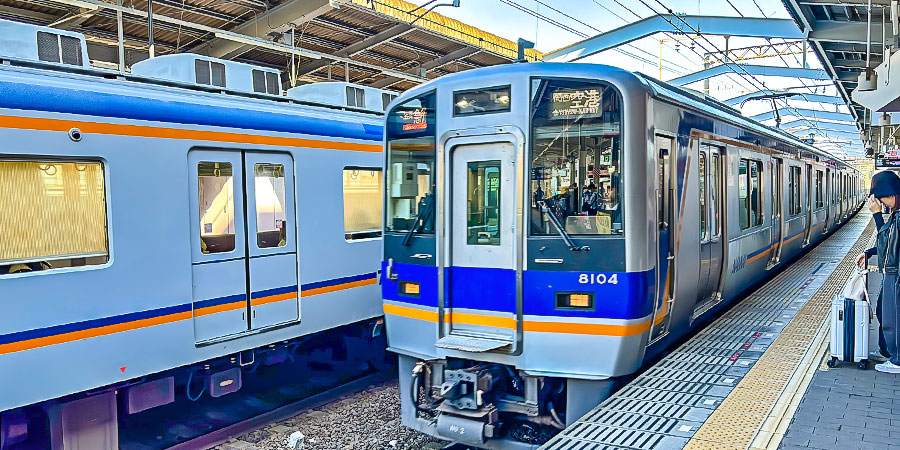Japan Trains
Japan has developed a crisscross railway network all over the country, as each city and place is veined with Shinkansen - the bullet trains, limited express trains, express trains, rapid trains, and local trains. The main trains are operated by JR companies of each region, which is also the major part of Japan railways. In addition, many local trains are private, running around a city. That’s to say, both JR trains and private local trains are accessible for a mid-short distance journey in Japan.

|
Shinkansen Bullet Trains - the Fastest & Expensive
Shinkansen of JR is the fastest train type in Japan, at a speed of 250-300 km/h (155-186 mph) generally. It is the trunk line, stretching to the main cities around the country. There are usually the standard class, green class and gran class onboard, but not every Shinkansen train has all the three classes.
Ordinary Trains

Limited Express Fuji Excursion
|
Not only JR operates these ordinary trains, but also private railway operators have some of these trains around the cities. Usually, travelers can get a transfer between two railways easily in Japan, and you needn’t worry about it but follow the search result by Google Map.
Shinkansen Bullet Trains VS Ordinary Trains
|
Shinkansen Bullet Train |
Ordinary Trains |
|||
|
Limited Express |
Express Train |
Rapid Train |
Local Train |
|
|
The fastest Top speed: 320 km/h (199 mph) |
Slower and slower |
|||
|
Stops at major stations |
More and more stops; Local trains stop at every station |
|||
|
Expensive |
Cheaper ticket fare |
|||
|
Reserved seats in gran class and green class; Both reserved and unreserved seats in the standard class |
Unreserved seats mostly Limited express trains have reserved seats and maybe different classes Local trains look like metro trains |
|||
Take the train trip between Kyoto and Osaka as the example:
|
|
Travelling Time |
Fare |
Density of Runs |
|
Shinkansen |
13 minutes |
JPY 1,450 (Non-reserved seats) JPY 3,280 (Reserved seats) |
9-10 Shinkansen trains per hour |
|
Limited Express |
22-27 minutes |
JPY 1,340 (Non-reserved seats) JPY 2,070 (Reserved seats) |
3-4 trains per hour |
|
Express/Special Rapid Train |
23-24 minutes |
JPY 580 JPY 1,420 for a reserved seat if there are |
4-5 trains per hour |
|
Rapid Train |
31-33 minutes |
JPY 580 |
About 4 trains per hour |
|
Local Train |
42-50 minutes |
JPY 580 |
Every 10-15 minutes |
Notes:
|
|
|
Japan Rail Pass
JR Pass is money-saving for your train travels in Japan. JR companies of different regions issue a variety of Japan Rail Pass, for different regions and valid days. With a JR Pass, you can take the applicable trains for unlimited times within the validity.Above all, only frequent train trips would save money. Also, it is critical to figure out the applicable scope of its use before your reservation. That is, make it clear which trains can be taken with the Japan Rail Pass in the corresponding region. Thereout, you can take full advantage of the JR Pass on your journey.


